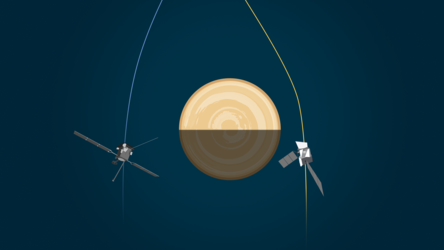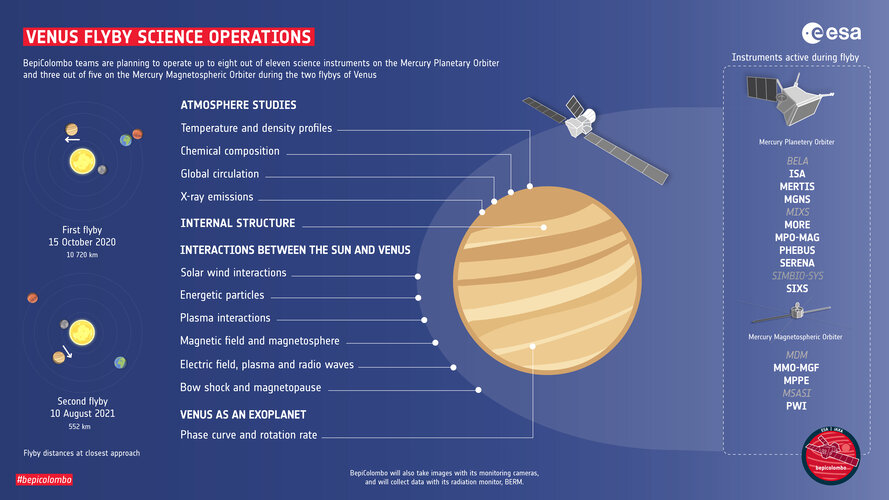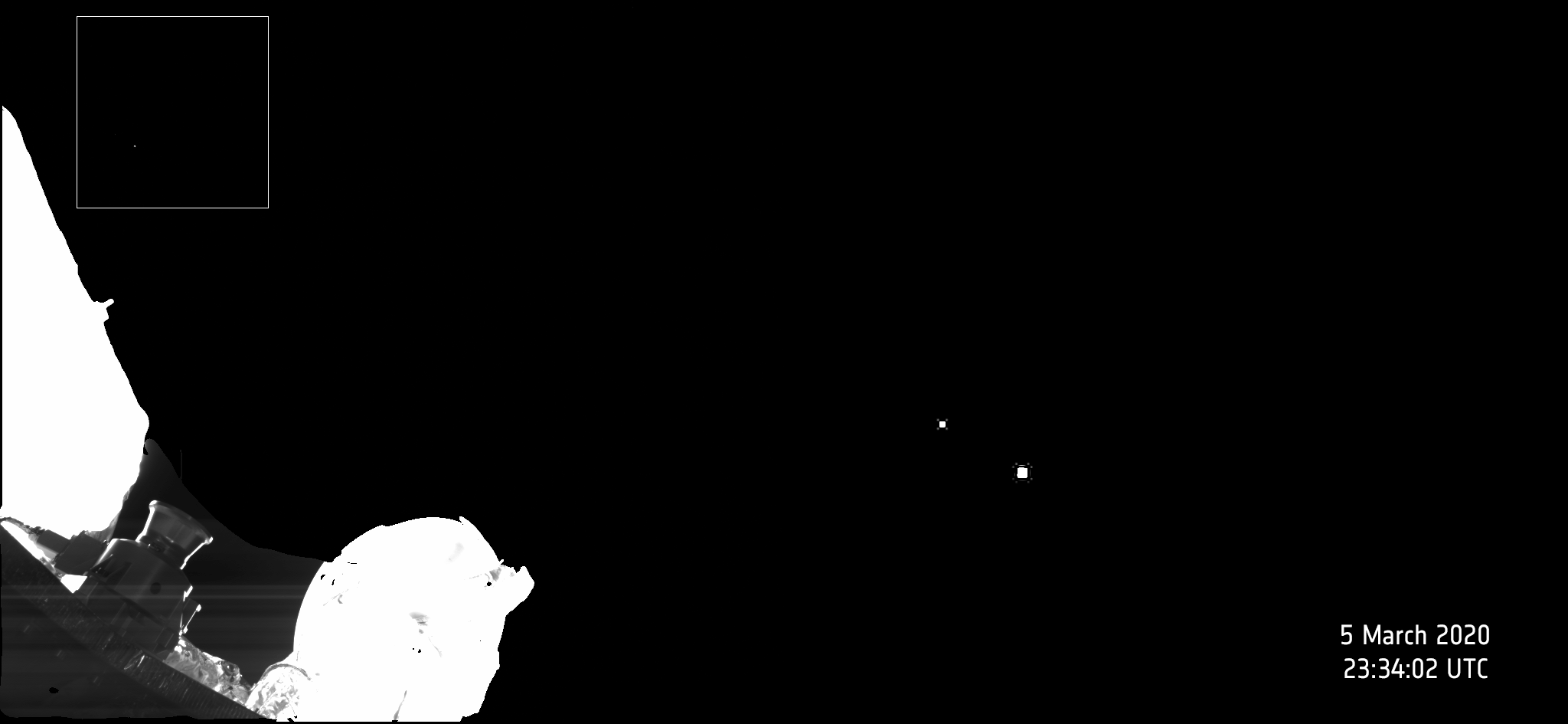What are gravity assists?
On Earth, fuel is a limited, precious resource. In space, we trade energy freely with the planets.
As Arthur C. Clarke said in 1987 “Nature always balances her books”, referring to the fact that energy in the universe is always conserved: it cannot appear from nowhere or disappear into nothing.
As such, flying spacecraft through the Solar System is about the clever management of energy – stealing or giving to passing planets depending on where we want to go.
This transfer of energy is called a gravity assist, slingshot, planetary swingby or flyby, and without them we could not have voyaged to the many corners of the Solar System we have today.
With orbits, size matters
In space, “speeding up” or “slowing down” only make sense with respect to another object. A train might travel 70 km per hour with respect to a stationary passenger, but as seen from the Sun the train’s movement also includes the motion of the Earth as it orbits and spins. It’s all relative.


Access the video
More often when talking about the movements of planets and spacecraft in the Solar System, we speak of their “orbital energy”, a value which is directly related to the size of an object’s orbit. Pluto, at the edge of the Solar System, travels in a much larger orbit than Mercury, the closest planet to the Sun, meaning Pluto’s orbital energy is far, far greater than Mercury’s.


Access the video
To get a spacecraft to Mercury, we therefore have to match its orbit. When BepiColombo was launched, its orbital energy was the same as our home planet’s. Therefore, BepiColombo needs to either use a vast amount of propellant to ‘put on the brakes’, or it can shed excess orbital energy by flying close to neighbouring planets.
The same works in reverse to voyage to the outer Solar System. To get into a larger orbit, further from the Sun, a spacecraft such as ESA’s upcoming Juice mission to Jupiter will steal orbital energy from Earth, Venus and Mars.
It all depends on your frame of reference
So what’s the difference between stealing energy from a planet and donating to it? It all depends on the relative motion of the spacecraft and the planet.
From the perspective of a planet being flown by, the spacecraft comes towards it and leaves with the same velocity, only its path has been deflected. (The spacecraft has also deflected the planet, but by such a miniscule amount as to be insignificant. Nonetheless, Newton’s third law of motion has been preserved: “To every action there is an equal and opposite reaction”.)
But remember, the planet itself is in motion around the Sun, and orbiting with a huge amount of momentum. As seen from the perspective of the Sun, the spacecraft is not just diverted on its path but it will have picked up or dropped off orbital energy depending on the geometry of the encounter.


Access the video
To increase speed with respect to the Sun, the spacecraft flies with the movement of the planet, acquiring some of the planet's orbital energy in the process; to decrease speed with respect to the Sun, the spacecraft flies against the movement of the planet to transfer some of its own orbital energy to the planet.
In both cases, energy transferred to or from the planet is negligible, but makes a big difference to our tiny spacecraft. It would take a spacecraft billions of times bigger than those we have today to measurably nudge a planet!
Orbital mechanics: a merging of nature and science
To voyage through the Solar System requires more than simply a rocket, thrusters and propellant. Our teams of flight dynamics experts and flight control teams at ESA’s Operation’s Centre have to understand, work with, and get the best out of the motions of the planets and the unavoidable laws of nature.
Find out about the double gravity assist of Venus taking place over 9-10 August, in which BepiColombo and Solar Orbiter both used the planet to alter their orbits, bringing them closer to Mercury and the Sun.












